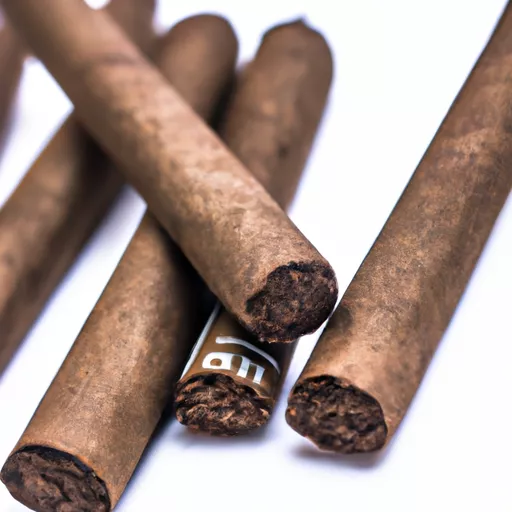the little cigars

As a lover of all things tobacco, I have always been intrigued by the world of little cigars. These miniature versions of their larger counterparts not only pack a powerful punch, but also come in a wide range of flavors and styles. In this article, I will discuss all there is to know about little cigars, from their history to their composition and even their unique marketing tactics.
First and foremost, it’s important to understand what exactly a little cigar is. Similar to cigarettes, little cigars are made of tobacco wrapped in a paper or tobacco leaf casing. However, unlike cigarettes, little cigars are larger in size and typically come in a 100mm length. They are also taxed and regulated differently than cigarettes, which has contributed to their growing popularity in recent years.
Little cigars have been around for quite some time, with the first ones appearing in the late 1800s. They were initially created as a cheaper version of cigars, catering to those who couldn’t afford the more luxurious hand-rolled cigars. However, it wasn’t until the 1960s that little cigars gained popularity in the US, thanks to their mass production by large tobacco companies.
One of the main differences between cigars and little cigars is their composition. While cigars are traditionally made of 100% tobacco, little cigars often contain a blend of tobacco and additives, such as cellulose, to help them burn more evenly and consistently. Despite this, little cigars still offer a rich and robust flavor that is similar to their larger counterparts.
One of the most intriguing aspects of little cigars is their wide range of flavors. From classic tobacco to more unique flavors like cherry and vanilla, there is a little cigar for every palate. These flavors are achieved through a variety of methods, such as injecting the tobacco with flavoring oils or using flavored papers to wrap the cigar. Some companies also offer infused little cigars, where the tobacco is aged with an added flavor component, resulting in a more subtle and complex taste.
Marketing tactics for little cigars are also quite different from those of cigarettes. While cigarettes have strict regulations on advertising, little cigars are able to use more creative and eye-catching methods to appeal to consumers. From their unique packaging to their use of celebrity endorsements, little cigars have become an attractive and trendy option for smokers.
However, like any tobacco product, there are risks associated with smoking little cigars. Despite their small size, little cigars still contain nicotine and the same harmful chemicals found in cigarettes. Therefore, it is important for consumers to be aware of the potential health hazards and smoke responsibly.
In recent years, there has been a shift towards more natural and organic tobacco products, and little cigars are no exception. There are now options for all-natural little cigars, made with organic and sustainable tobacco, as well as biodegradable packaging. This appeals to consumers who are conscious of their health and the environment.
In my personal experience, little cigars offer a convenient and enjoyable smoking experience. They are small enough to fit in my pocket and are perfect for a quick smoke break. Plus, with the wide range of flavors available, I never get bored and always find something new to try.
In conclusion, little cigars have come a long way from their humble beginnings as a cheaper alternative to cigars. With their unique history, composition, flavors, and marketing tactics, they have carved out their own niche in the tobacco world. Whether you are a long-time cigar smoker or new to the world of tobacco, I highly recommend trying out some little cigars for a unique and satisfying smoking experience. Just remember to smoke responsibly and always be aware of the potential health risks.